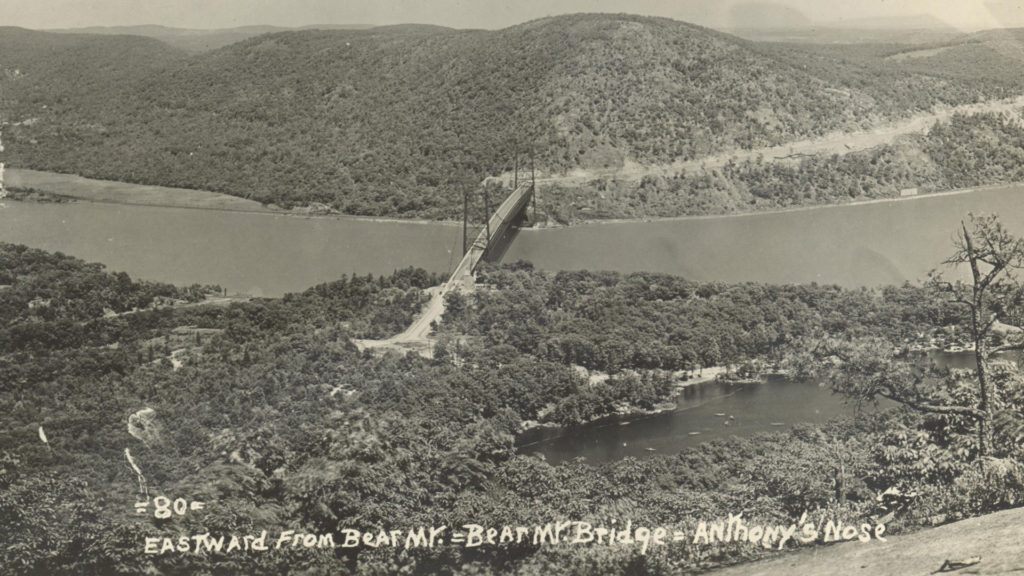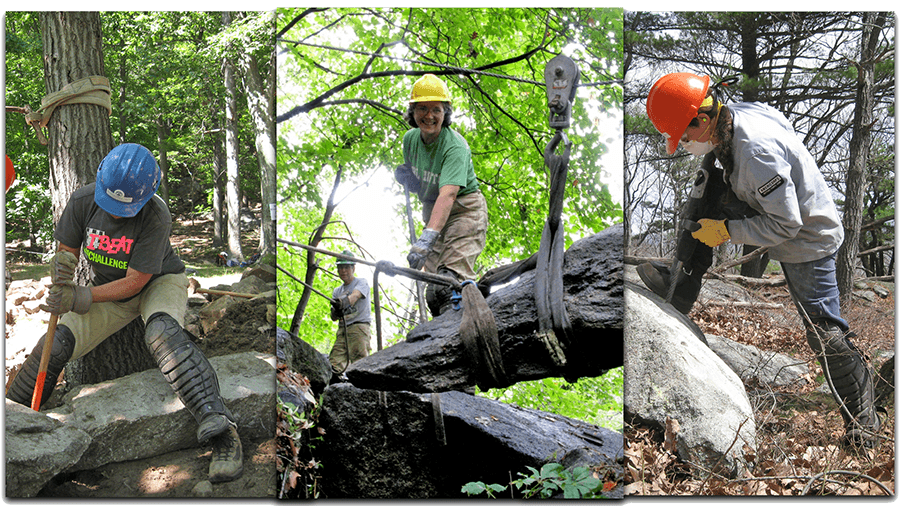By Jordan Bowman, ATC Director of Communications
Bear Mountain: A Legacy of Footpath Protection
February 12, 2020
Throughout the Appalachian Trail Conservancy’s century-long history, the Appalachian Trail footpath has always served as the backbone of our conservation efforts. Over the next few months, we will explore the ATC’s past, present, and future work in maintaining and protecting the footpath that brings millions closer to nature each year.
The journey begins almost 100 years ago, when something extraordinary was happening in the mountains of eastern New York…
In 1923, a small group of volunteers gathered at the base of Bear Mountain, just off the shores of the Hudson River. Carrying much of the same equipment used by ATC volunteers today — spade shovels, mattocks, Pulaskis — these intrepid volunteers broke ground on the very first section of the Appalachian Trail. Onlookers must have thought such a massive and complex project was impossible. Yet in October of that year, hikers were able to follow the Trail’s first white blazes to the summit of Bear Mountain.

The construction of the A.T. on Bear Mountain established not only the volunteer heritage of the Trail, but also made it clear that a dedicated organization was required to realize the vision of a continuous footpath from Georgia to Maine. That organization is the ATC, formed in 1925 (then known as the Appalachian Trail Conference). Through the leadership of the ATC and its partners, the dream initiated in 1923 became a reality in 1937, when every section of the A.T. was officially connected.
But that is only the beginning of the story.
Through decades of work in maintaining the Trail, the ATC helped advance the field of sustainable trail-building practices and visitor management, identifying ways to help protect the footpath that millions have come to know and love. A massive project on Bear Mountain — where it all began — illustrates this knowledge put into practice.
Located fewer than 50 miles from New York City, Bear Mountain is one of the most visited sections of the Trail. The techniques used to create this section of the Trail a century ago were not designed to handle increased foot traffic and decades of erosion. Some sections of the Trail were reportedly 80-feet wide and other sections resembled a ditch more than a footpath. It was clear a multi-year effort to rebuild this section was required.

From 2006 to 2018, the ATC and its partners undertook the lengthy process of relocating and rehabilitating 3.9 miles of Trail over Bear Mountain. Where once there was only fragile soil or barren rock leading to the summit, 1,300 granite stairs were installed. A section on the mountain’s summit was made accessible to people with disabilities, allowing more people to experience the grandeur of standing at the summit and looking over the Hudson River and the New York countryside. And the footpath itself was designed to help it better withstand erosion and foot traffic.
The work on Bear Mountain is a prime example of the work the ATC is committed to accomplishing for all 2,193 miles of the Trail. After all, what would the Appalachian Trail be without the footpath? Through the support of our members, donors, volunteers, and partners, we will ensure that the Trail itself is maintained and strong for the next century of adventure.
Help us protect the A.T. legacy of volunteerism and Trail protection — your donation today helps ensure future generations can experience a closer walk with nature.
Lead image courtesy of Christian Mena / NYNJ Trail Conference
